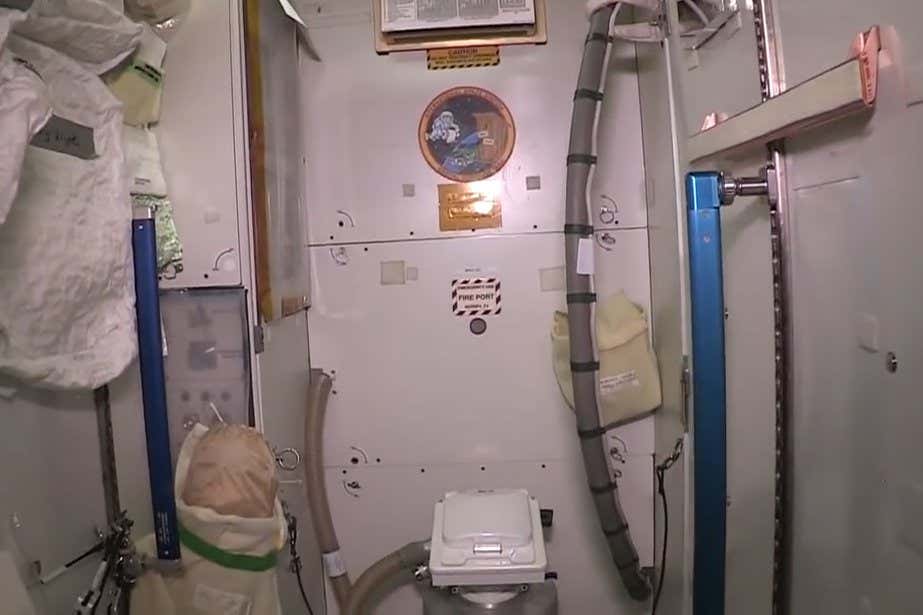[ad_1]

The toilet on the International Space Station
European Space Agency
Anyone with access to the internet is able to follow the toilet habits of astronauts on the International Space Station (ISS), a security researcher has discovered.
An anonymous cybersecurity analyst, who goes by the name Gi7w0rm and works with a service that scans the internet for vulnerable devices, accidentally discovered that there were two data feeds coming from the ISS related to urine: one showing the percentage fullness of the urine tank on board the space station, and one showing the status of the processor unit that converts urine into potable water for the astronauts.
Both of those metrics, as well as hundreds more relating to everything from the number of laptops connected to the ISS network to the level of CO2 in the air on board, can be seen online.
Gi7w0rm said that they were “not necessarily surprised, but definitely amused” by the finding. “You don’t always get to watch astronauts pee,” they say.
They had been investigating a “sensitive” government system that had a vulnerability and accidentally came across the ISS data feed. Fearing it was a security leak – albeit one without an immediately obvious risk – Gi7w0rm contacted the Cybersecurity and Infrastructure Security Agency (CISA), which oversees government IT security in the US.
“The last month, I have created probably over 250 voluntary reports to big companies and nation states in regards to critical vulnerabilities,” says Gi7w0rm. “This included everything from the average business to military contractors, governments, police and critical infrastructure. In this particular case, I was looking for vulnerabilities in relation to space.”
NASA wasn’t able to comment before publication, but Tristan Moody, a systems engineer at Boeing, says that the feed is an intentional, albeit obsolete, tool that was originally linked to a now-defunct website called ISSlive. “At some point, the original project was abandoned, but the telemetry stream lived on. It’s been publicly available since somewhere around 2011, as I recall. The data available is a very small subset of the thousands of telemetry channels used by the ISS, but it’s interesting nonetheless,” he says.
The old data feeds aren’t likely to be showing the whole picture of urine recycling on the ISS. The space station’s Environmental Control and Life Support System (ECLSS) is a collection of various hardware designed to keep conditions on board safe. Part of ECLSS is the Urine Processor Assembly, which takes waste and separates it into water and a brine solution by distillation.
NASA recently added a Brine Processor Assembly to the ECLSS to take that solution and extract even more water from it, taking the level of water recovered on board the ISS to 98 per cent – up from around 94 per cent. Details on this device aren’t included in the public feed.
In a statement earlier this year, Jill Williamson, ECLSS water subsystems manager, said: “The crew is not drinking urine; they are drinking water that has been reclaimed, filtered, and cleaned such that it is cleaner than what we drink here on Earth. We have a lot of processes in place and a lot of ground testing to provide confidence that we are producing clean, potable water.”
Topics:
[ad_2]
Source link




